The Opening of the Shoreham Branch Railway Line 1840
It is not generally appreciated (except by railway history enthusiasts) that before the formation of the London, Brighton and South Coast Railway proper (1846), the railway line to Shoreham (initially the line ended here and was not extended to Worthing until 1845) was the first part of the then London & Brighton Railway to be opened (1840) for traffic – one year before the line from Brighton to Haywards Heath and eventually to London.
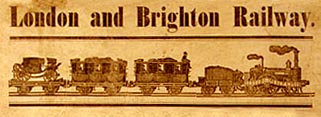
Consequently, the opening of Brighton station was on the same day as the opening of the Shoreham line and this took place on Monday, May 11th, 1840. Despite the restrictions of the Second World War the centenary of the event was marked by an exhibition at the Brighton Pavilion in 1940 and amongst the Winton family albums and scrapbooks is a guidebook of the exhibition describing the events leading up to and including the original opening and detailing the exhibits on display. This article brings together written records of the 1840 opening and some of the illustrations listed in the guidebook.
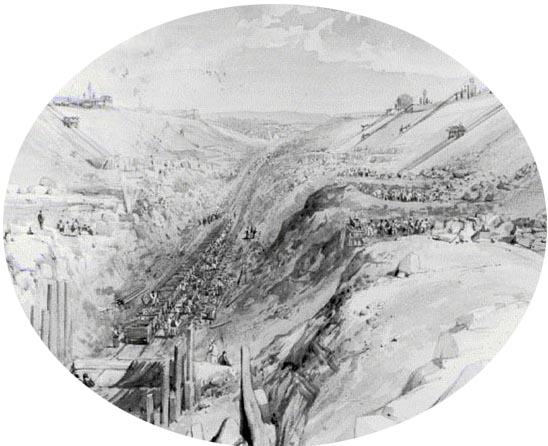
The line was cut through New England Hill and many hundreds of workers were employed in the massive job to excavate the chalk and earth, first through the hill and then on to Hove, Portslade, Southwick and Shoreham. To assist in this two locomotives were purchased by the London & Brighton to transport railway lines, sleepers and carry away earth and chalk excavated during the construction of the line. Both were made by Jones, Turner and Evans at their Viaduct Foundry, Newton Le Willows in 1839. One was a 2-2-2 wheel configuration (from the side the wheel arrangement of the engine looked like oOo) numbered 1 by the L&B and named ‘Brighton’, the other was ‘Shoreham’ an 0-4-2 (OOo) configuration and numbered 2. Known as the’ Jones Singles’ (they only had one pair of driving wheels on one axle as did most locomotives then) – ‘Shoreham’ was later taken over by the South Eastern Railway Company in 1844.
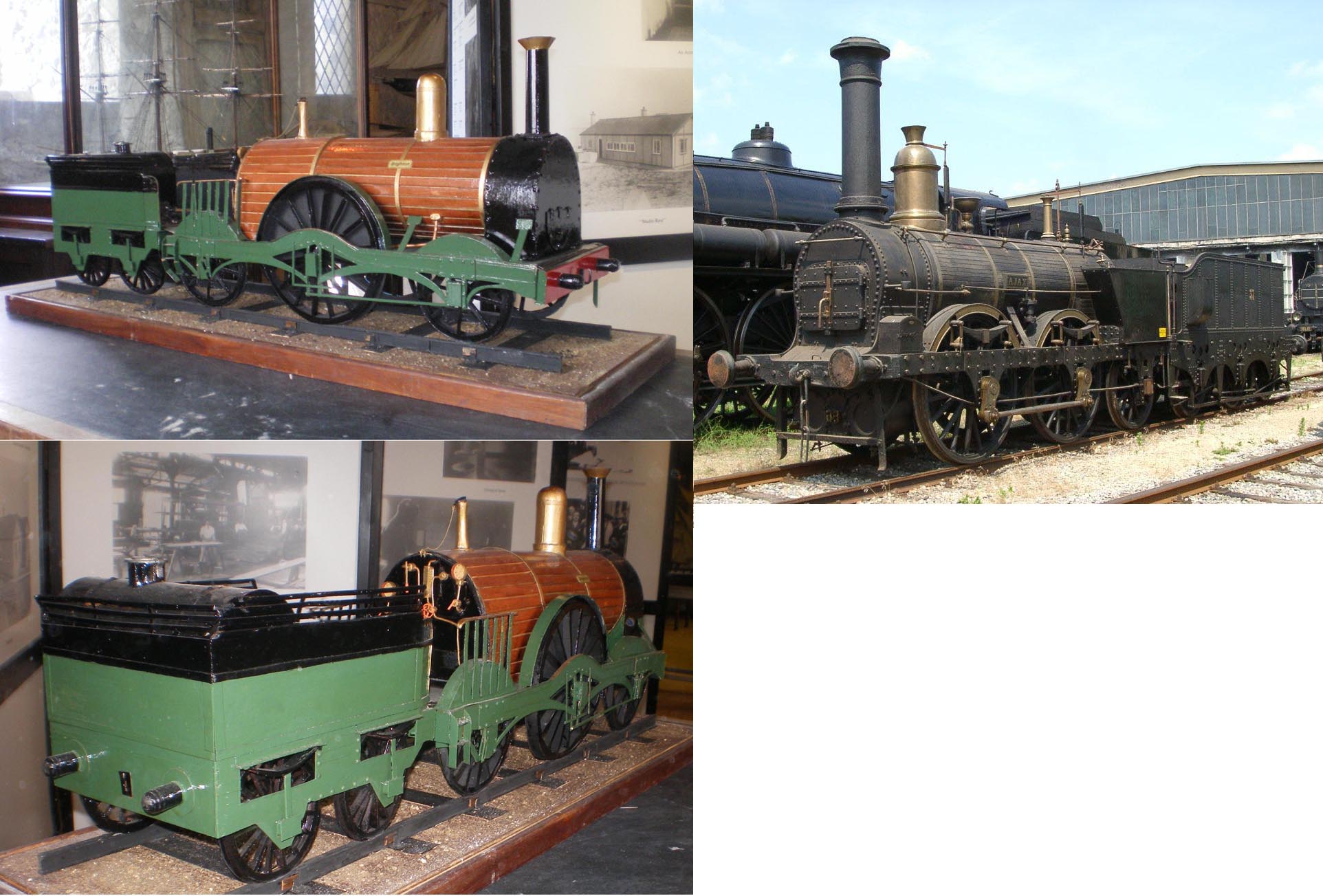
John George Bishop 1825 – 1911, a Brighton historian and for many years proprietor of the Brighton Herald, wrote of the event in his book “A Peep into the Past or Brighton in the Olden Time”:-
“The first portion of the Company’s system opened for traffic was that running between Brighton and Shoreham, the event taking place on Monday, May 11th, 1840. Most of the Directors were present on the occasion and there was a very large number of spectators. No one was admitted inside the Station without a ticket but 1,000 of these having been issued, entitling the bearer to take the trip gratuitously there was not for short of that number who availed themselves of it.
The first train started about three o’clock, amid the strains of the Lancers’ Band and the cheers of the spectators, to the majority of whom the Railway train was a “new sensation.” The trip occupied eleven and a half minutes the return trip taking a trifle longer. The train continued running throughout the afternoon, and the scene down the whole Line was exceedingly animated, crowds of persons assembling at the different points to witness its passing. “Business” commenced next morning at eight from Shoreham, the train returning from Brighton at nine. During the day 1,750 passengers were carried, not a few visiting the Swiss Gardens, where the opening of the Railway was celebrated by a grand féte.
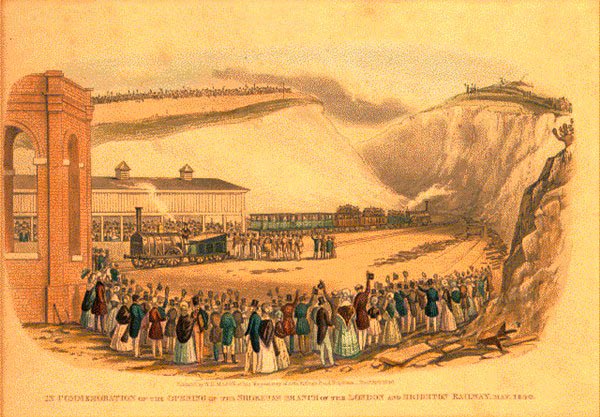
Business went along pleasantly for the remainder of the week and for day after day hundreds embraced the opportunity of a railway ride. On the Sunday evening, however, a fatal accident occurred. A young man named Atherell, who was incautiously sitting on the tail-board of a luggage wagon, which had been temporarily used to accommodate the extra traffic at Shoreham, was at Southwick precipitated by a sudden jerk beneath the train and killed on the spot.”
Even in those early days the excitement of travelling on the railway was tempered by the discomfort that passengers had to endure. Having been able to experience for himself in his later life the relative comfort and luxury of late Victorian railway coaches compared to the days of early railway travel , Bishop continues:- “The original third-class carriages were of the
poorest description, little better than cattle trucks. They were wholly uncovered, and some had not even the accommodation of seats, the divisions of the sections in each carriage being simply an iron rail. Travelling under such circumstances was the reverse of pleasurable: the dust and smoke from the engine were annoying in the extreme; but worse than these will., the almost constant descent of fine ashes and umbrellas were in frequent requisition by passengers to prevent these getting into the eyes and to avoid the chance of a burn. Their condition when these unpleasant concomitants were associated with a high wind or a driving rain may be better imagined than described. By and by “covered carriages” were introduced, but without windows! These latter luxuries, with, in some cases, cushions, &c., are modern improvements, which were altogether unknown to the “Parliamentarians” in the earlier days of Railway travelling.” (third class carriages then were known as’ Parliamentary Carriages.’)
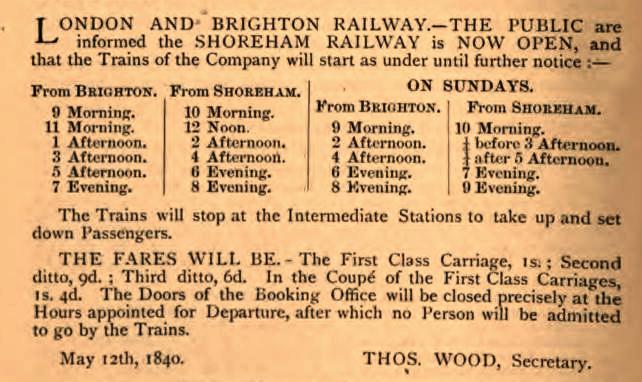
The opening was also covered by the Brighton Gazette and witnessed by ‘thousands of townspeople’ from the hillsides around the station whose first sight this would have been of a means of transport that would revolutionise the nineteenth century. Interestingly, it discloses a problem on the day that held up the proceedings – something that the other records of the event have chosen to ignore:-
“The engine selected for the first trip was `Kingston’, conducted by Jackson, the engine driver who has been employed for the last twelve months In working the Brighton and Shoreham for the removal of earth along the line. Next to the tender were two first class carriages, each containing about 40 persons, consisting of a number of the Directors, and the principal tradesmen and local officers of the town. Then followed two second class and two first class carriages, principally to the use of ladies and containing 20 persons each. The rear was brought up by three of the luggage wagons, which had been fitted with forms containing accommodation for 70 other passengers, making the number taken In the first trip about 230.
Precisely at 3pm the whistle was blown but a locked ‘break’ (sic) made a delay of 11 minutes.” (the report fails to include the fact that it was the L & B’s own engineer John Urpeth Rastrick himself that had to take leave of the directors and dignitaries to release the engine’s jammed brake) “The train ‘passed the station house at Copperas Gap at 18 minutes past three, the entrance to the harbour at 23 minutes past three and arrived at Shoreham at 23 minutes after three’. During the day upwards of a 1,000 people travelled the five and a half miles behind the engines “Kingston” and “Eagle”.
Kingston was the locomotive to pull the first train from Brighton to Shoreham but both that and the Eagle shared the trips up and down the line that day. Kingston was a 2-2-2 configuration engine built by Sharp Roberts & Co at their Atlas Works in Manchester and delivered to L & B in 1839. It was designated engine number 5 then re-numbered 39 after the company became LB&SCR. EAGLE was also a 2-2-2 configuration but built by G & J. Rennie in 1840. It was number 6 with L&B and became no.39 with LBSCR.– this design was susceptible to explosion and the sister engine ‘Vulture’ did just that at Brighton station.
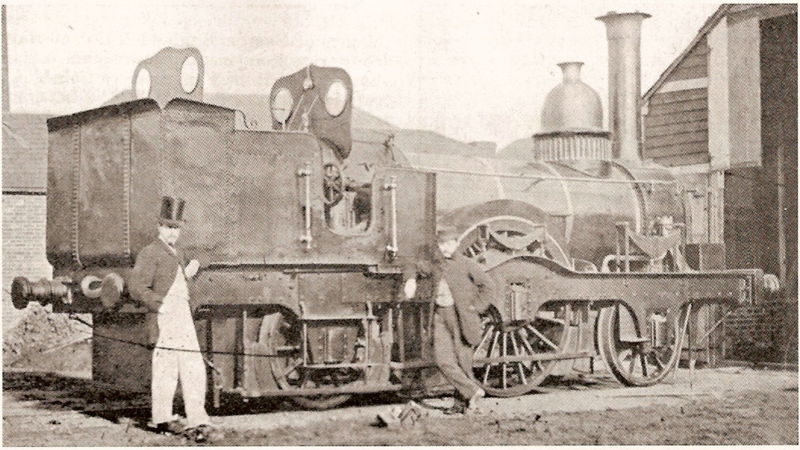
Henry Cheal, the Shoreham historian when writing of the town’s original station tells us “The Railway Station has been once rebuilt. Many will recall to mind its predecessor with the old “box-like” waiting room on the down-side, out of which one went up a flight of steps on to the platform.”
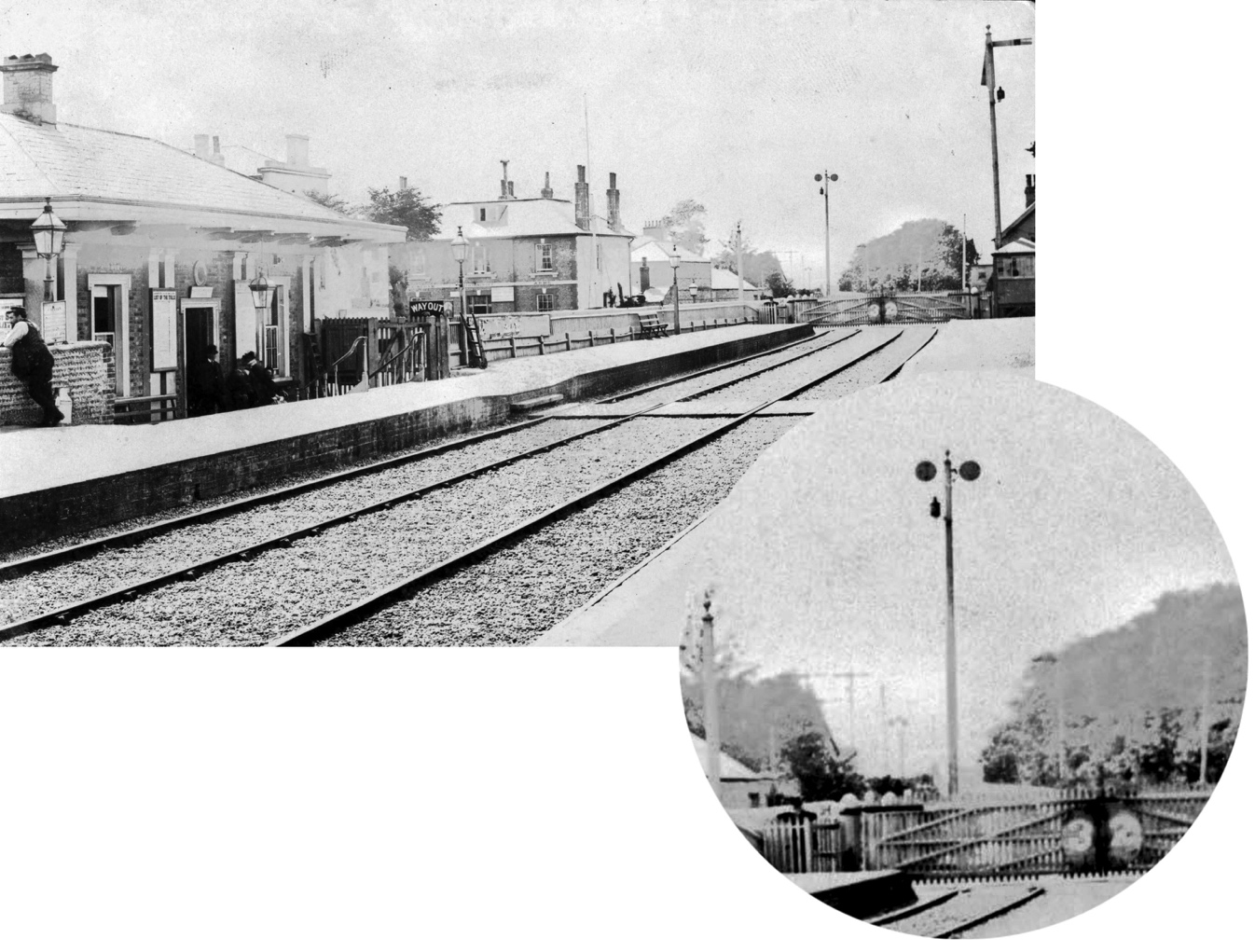
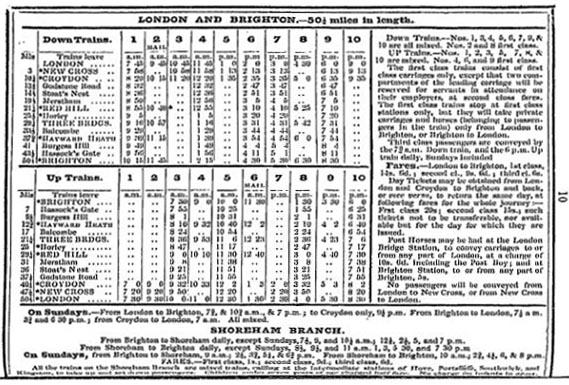
The Shoreham details on the timetable image are not clear but are:-
“Shoreham Branch
From Brighton to Shoreham daily except Sundays 7½,9,10½ a.m.;12¼,2½ ,5, 7 p.m.
Shoreham to Brighton daily, except Sundays 8½,9½,11 a.m. 1,3,5 30, and 7 30 p.m. On Sundays, from Brighton to Shoreham, 9 a.m. ; 2¼, 3¾, 5¼, &6¾ p.m. From Shoreham to Brighton, 10 a.m; 2¾, 4¼, 6, & 8 p.m.
FARES. – First class. 1s; second class 9d; third class 6d.
All the trains on the Shoreham Branch are mixed trains calling at the intermediate stations of Hove, Portslade, Southwick and Kingston to take on and set down passengers. Children under seven years of age charged half fare. No charge for infants in arms.”
Bishop also mentions Kingston, not so much as a station stop but as a depot for refuelling:- “stations are erecting at Hove and Kingston, at the latter coals and merchandise will be stored that are intended for conveyance by the trains, coke ovens have also been constructed at Kingston for preparing fuel for the engines”.
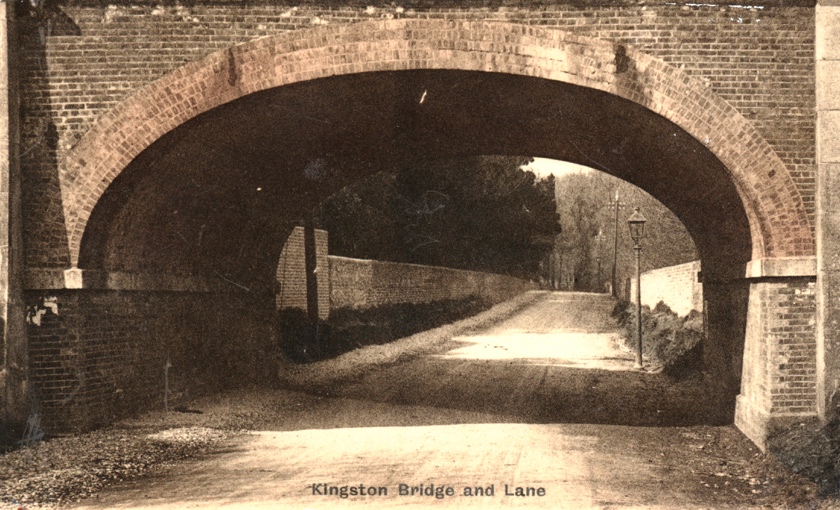
Later Developments
Of course, it was never intended that the line would remain with Shoreham as its terminus and the next town on the agenda was Worthing. The River Adur however was a major obstacle and it was necessary to construct a wooden trestle bridge to carry the line across it.
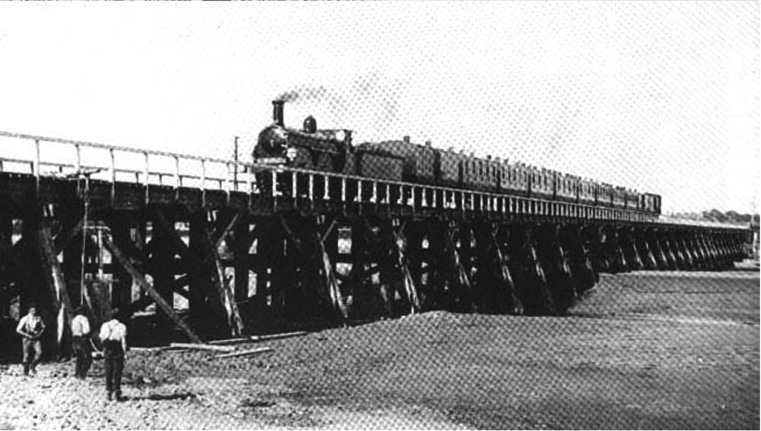
Years later after the wooden bridge had been replaced Cheal wrote of it:- “The original trestle bridge over the Adur becoming unsafe, was replaced about 1896 by the present steel bridge designed by Sir John Aird. The supporting cylinders are filled with concrete and some of them find a firm footing 70 feet in the river-bed. With this fact in mind, it is surprising that the former bridge of wood had served its purpose for so many years.
Eventually, on November 24th, 1845, Worthing received its first railway passengers and work on the line continued to Chichester which it reached on June 8th, 1846. The junction from Shoreham to Partridge Green was opened 1st July, 1861 and the extension from there on to Horsham on 16th September, 1861.
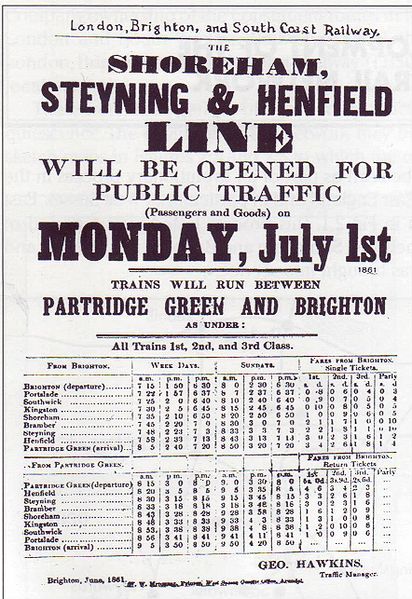
Locomotives given the name ‘Shoreham.’
There were three engines named ‘Shoreham’ the first in 1839 was used in the construction of the Shoreham branch line and has already been described. The second was built by Nasmyth, Wilson and Co in 1867 and was one of six similar engines purchased by LBSCR known as the Nasmyth Wilson Singles. These were 6ft.6in express engines of 2-2-2 configuration and ‘Shoreham’ was the company’s engine number 238.
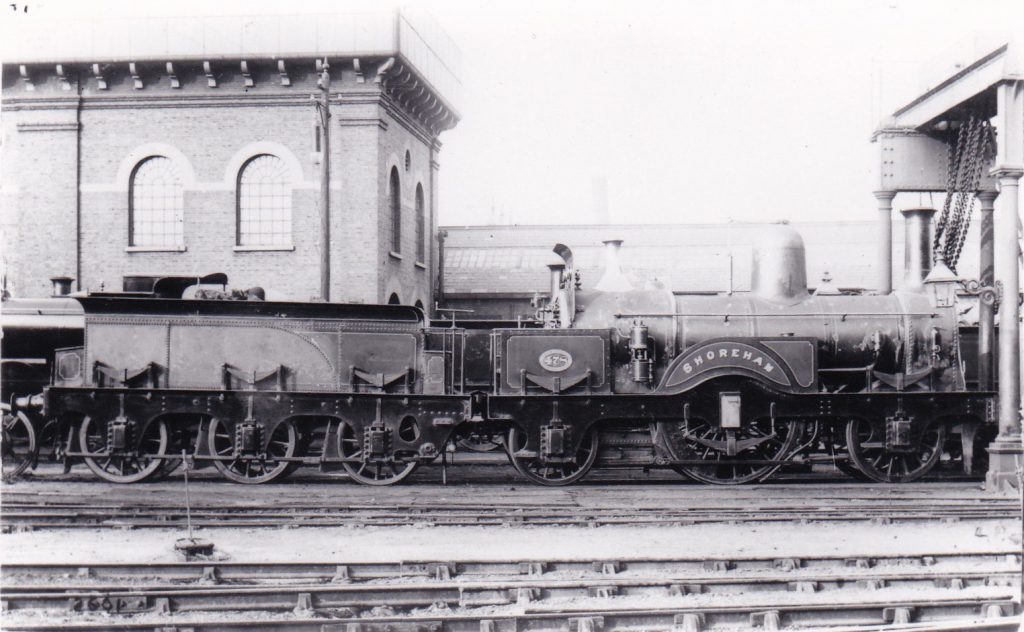
The third was designed and built by R.J.Billinton at the Brighton Works. We know more about this engine:- it was an 0-4-4T configuration bogie passenger tank engine, numbered 389 intended for country and semi-fast trains and for the technically minded – coupled wheels 5ft6in, cylinders 18in x 26in, working pressure 160lb, heating surface 1,203.44 sq.ft, grate area 17.08 sq.ft and weight in working order 48 and a half tons. Tanks were round-edged type with a combined capacity of 1,161 gallons. It was completed in May of 1894, designated the number 389, later becoming known as one of the Class D3 tank engines. Competition between railway companies was intense, particularly between LBSCR and the South Eastern Railway and in 1895 this particular locomotive carried out a ‘specimen’ run pulling a load equal to 9 and a half coaches on the Oxted line and managed just under 57 minutes including dead stands at an agreed number of stations and stops – this emphasised the LBSCR’s practice at the time of fast trains over shorter distances. This engine was eventually taken over by British Railways in 1948.
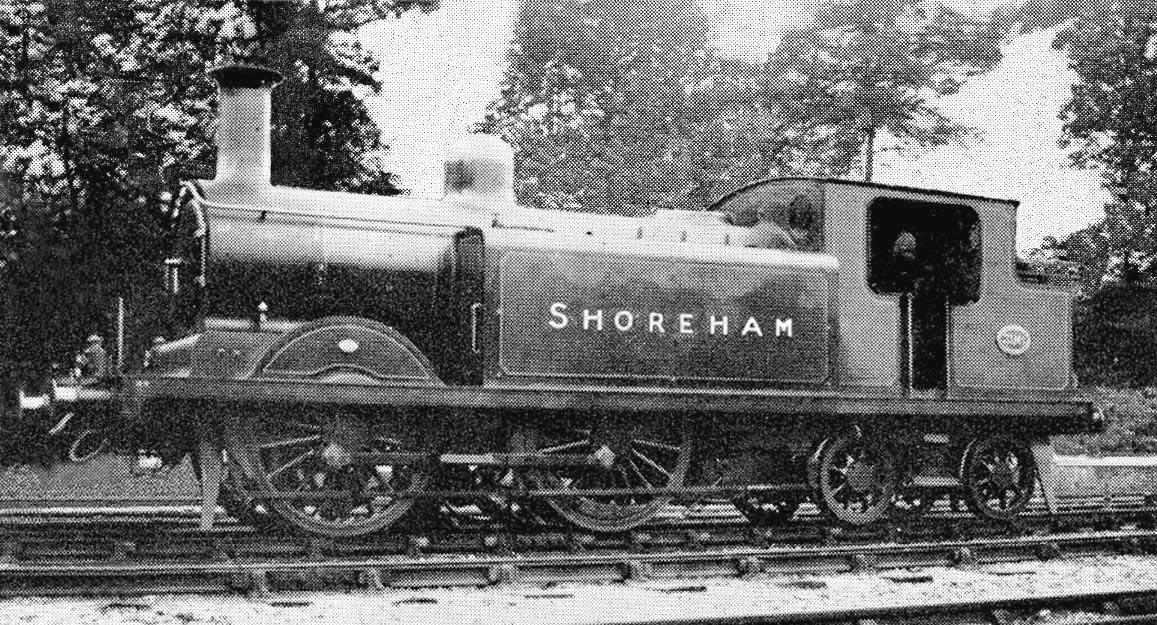
Roger Bateman
Shoreham
May 2010
Sources :-
‘A Peep into the Past or Brighton in Olden Time’ by John George Bishop published 1892,
‘The London, Brighton and South Coast Railway’ by C.Hamilton Ellis 1960
‘Locomotives of the London, Brighton and South Coast Railway, Part 1’ by D.L.Bradley 1969,
‘SUSSEX MAIN LINES – A YEAR 2002 SURVEY’ by John Blackwell
Lists of LBSCR Locomotives – the Brighton Circle website
‘The Story of Shoreham’ by Henry Cheal 1921

